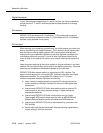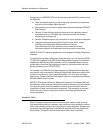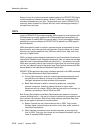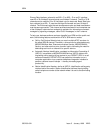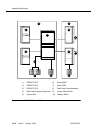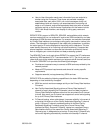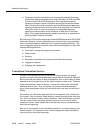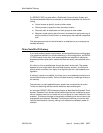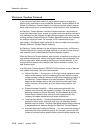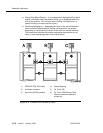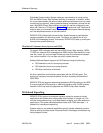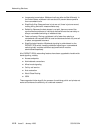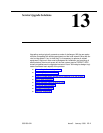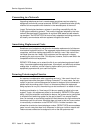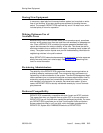
Networking Solutions
555-230-024
12-18 Issue 5 January 1998
Electronic Tandem Network
If your company requires a medium to large network spanning a large geo-
graphic area, nationwide or even worldwide, Electronic Tandem Network is the
answer. An Electronic Tandem Network is a wide-area private network that tan-
dems calls through one or more switches to route the calls to their destinations.
An Electronic Tandem Network consists of tandem switches, inter-tandem tie
trunks that interconnect them, access or bypass trunks from tandem switches to
main switches, and the software and equipment to support call routing over the
trunking facilities. Different Electronic Tandem Network locations are connected
via analog or digital tie trunks. For example, a DS1 interface can act as a
high-speed (1.544 Mbps) digital backbone for voice and data communications
between Electronic Tandem Network locations.
An Electronic Tandem Network can be configured hierarchically. An Electronic
Tandem Network can connect individual switches; it can also connect other pri-
vate networks (such as Main/Satellite/Tributary networks) together.
Within an Electronic Tandem Network, each location is identified by a unique pri-
vate network location code, similar to the public network office codes that exist
within an area code. When accessing the Electronic Tandem Network, a user
simply dials the network office code plus the desired extension number, for a
total of seven digits.
In an Electronic Tandem Network, DEFINITY ECS provides a variety of features
on a network-wide basis. Here are a few examples:
■ Uniform Dial Plan — A unique four- or five-digit number assigned to each
station on the network. Uniform numbering gives each station a unique
number (location code plus extension) that can be used at any location in
the Electronic Tandem Network to access that station, DEFINITY ECS
enhances the standard uniform dial plan with the unrestricted 5-digit
uniform dial play, which allows up to five digits to be parsed for call
routing.
■ Extension Number Portability — When employees move within the
network, they can retain their extension numbers. The ability to keep
extension numbers, and even Electronic Tandem Network and Direct
Inward Dialed numbers, when moving to other locations within the
company eliminates missed calls and saves valuable time.
■ Traveling Class Marks — Traveling Class Marks are a mechanism for
passing a caller’s facility restriction level from one Extended Tandem
Network switch to another. Traveling Class Marks allow privilege checking
to be passed across switches through the Electronic Tandem Network.
■ Automatic Alternate Conditional Routing — You can control the routing of
particular calls using conditional routing. For example, you can limit the
number of communications satellite hops (communications satellite links



